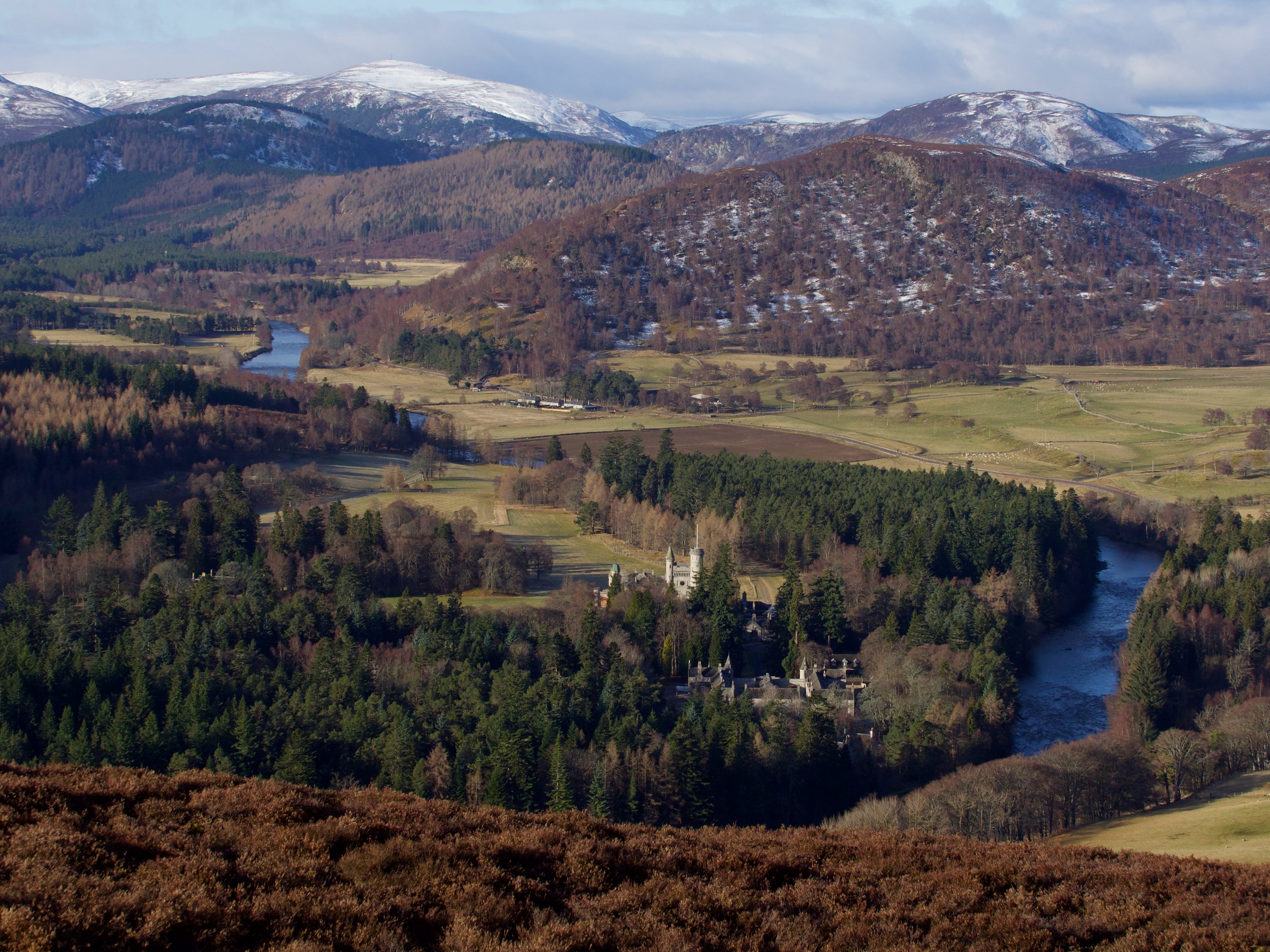Itinerary Inspiration: Autumn in Royal Deeside, Cairngorms.
Autumn in the eastern Cairngorms is truly stunning. Bathed in crisp morning air and with the sense of change and movement occurring every day, it is a prime place to not only witness autumn in action but to discover an unexplored side of the Cairngorms National Park. Swathes of Caledonian forest hug the fringes of munros and shelter the delightful villages of Braemar and Ballater and it is a haven for wildlife; a perfect place to get a sense of how diverse and spectacular wildlife is in Scotland.
Skeins of Pink-footed Geese will be migrating overhead as we stroll past ancient Granny pines. Mountain Hares soak in the soft, autumnal light as their fur starts to turn white for the winter. Golden and White-tailed Eagles cruise the ridgelines and we will marvel at Crossbills adeptly harvesting cones. Rich yellow and brown tones flush the forest as the leaves change whilst the open moors also glow with changing colour. Autumn is the season for fungi too and we expect to enjoy their myriad forms and colours. We will spend a day along the coast where hundreds of seals gather and thousands of waders will be feeding, whilst offshore Bottlenose Dolphins cavort along the coast. You even have an option to finish off our tour by getting face to face with Pine Martens and Badgers.
Over three days we will show you everything from Eagles and rutting Red Deer to hundreds of coastal birds, Beavers, Bottlenose Dolphins to vibrant fungi and dazzling autumn foliage.
Autumn in Royal Deeside can be spectacular
Itinerary
Day 1:
We will start the day looking up to the central massif of the Cairngorms surrounded by Caledonian Forest. Here Scottish, Parrot and Common Crossbills may be found whilst Red Squirrels scamper along the boughs. Torrents of water descend from the peaks through dramatics clefts and one cannot help but be awed by the landscape. Golden and White-tailed Eagle can both be found here as well as Peregrine. Herds of Red Deer graze the hillsides overseen by the dominant stags vying for prime positions. At this time of year the rut should be occurring and the bellowing of the stags reverberates around the glens. As we ascend we will search for Red Grouse and Mountain Hare whilst the first Snow Bunting may have descended to the mountain passes. In the late-afternoon we will explore the fringes of the southern side of the national park, an area where Eurasian Beaver have taken hold and with any luck we will see them out foraging.
White-tailed and Golden Eagles are both widespread in the eastern Cairngorms
Day 2:
In stark contrast to the previous day we will head east to the coast. All along the coast we will keep our eyes peeled for the resident pod of Bottlenose Dolphins and maybe even Harbour Porpoise as well as visiting a large haul out of Grey Seals. The sea will be peppered with Guillemot, Razorbill, Kittiwake and Fulmar along the coast and moving north we will explore an exceptionally rich estuary, dune and farmland area. Here we can hope to see a hundreds of wading and coastal birds including Knot, Bar-tailed Godwit and Grey Plover. Eider occur in large numbers and are occasionally joined by a King Eider. Further offshore there may well be Red-throated Divers, Common and Velvet Scoter and Long-tailed Duck. The agricultural areas along the coast are home to Corn Bunting, Tree Sparrow and Grey Partridge whilst flocks of Pink-footed Geese will be arriving from the north. At this time of year we can expect to witness the joys of migration and as well as commoner species arriving we may find scarcities from further afield.
Day 3:
Our final full day will be spent back in Royal Deeside where we will enjoy the foothills of the Grampians home to Green Woodpecker, three species of Crossbill, Merlin, Fallow, Red and Roe Deer and with luck the enigmatic Black Grouse. The forests are home to a huge variety of fascinating fungi which will be at their best in autumn. At this time of year flocks of Redwings and Fieldfares should be arriving and Capercaillie lurk in the quietest corners and we will also explore some stunning glacial relics including a fine kettle-hole surrounded by rich Caledonian forest and Aspen stands that should be golden yellow during the late-autumn.
Why not also arrange to visit the local Pine Marten and Badger viewing hide one evening for even more wildlife action.
Other additional days include exploring the Moray Firth coast and venturing to the west side of Cairngorms.
Royal Deeside in Autumn




